Adena Mounds at Ashland Central Park
Introduction
Text-to-speech Audio
Images
Photo of the Adena mounds in Ashland Central Park.
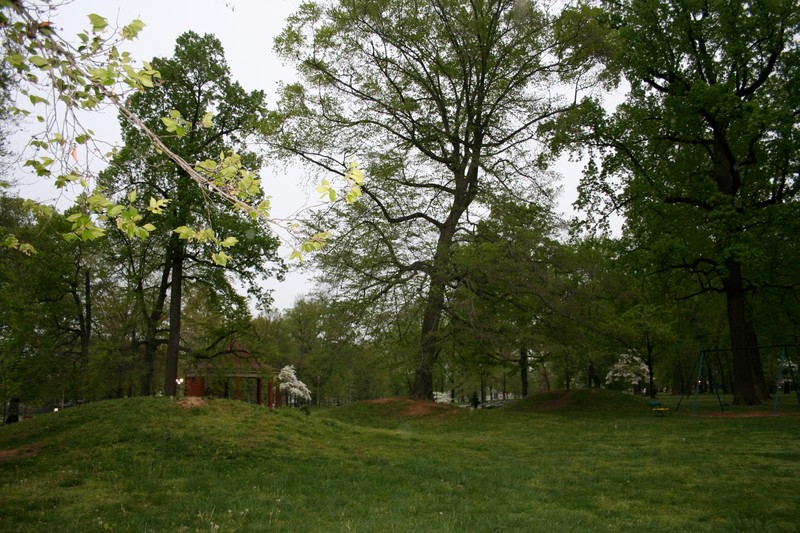
Another photo of the Adena mounds in Ashland Central Park.
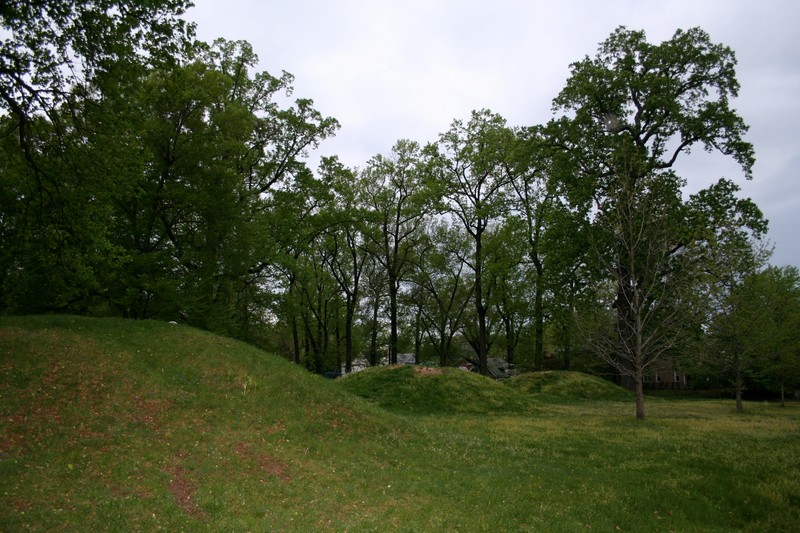
Sketch of a cross-section of an excavated Adena Mound.
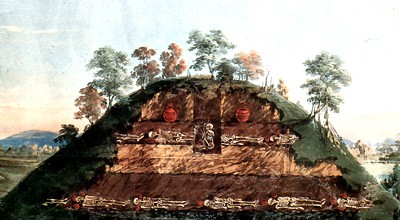
Map showing where the Adena Culture lived.
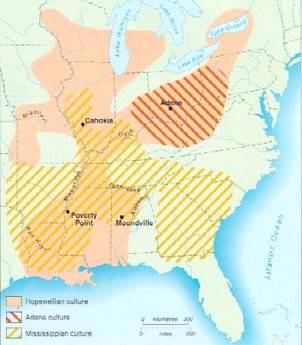
Adena pottery sherds.
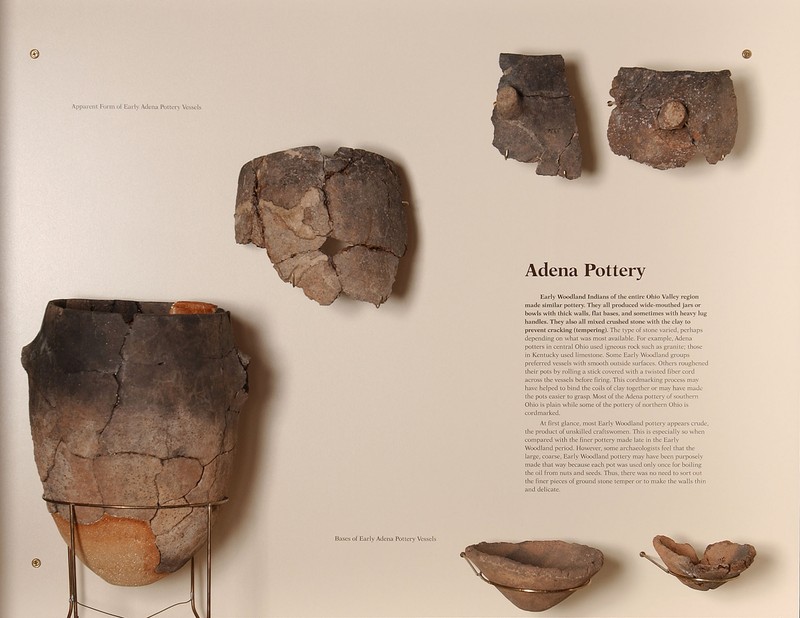
A collection of Adena artifacts including pottery sherds, bone tools, a bone flute, pendants, pipes, and arrowheads.
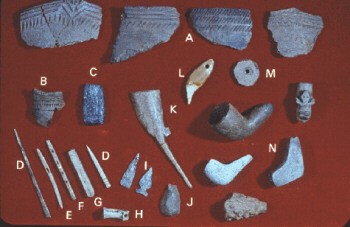
Backstory and Context
Text-to-speech Audio
In the middle of Ashland Central Park, there are six conical shaped Native American burial mounds. The three to six foot tall mounds are arranged in a slightly curved line running northwest to southeast. They average fifteen feet in diameter. The mounds were first documented by well-known Kentucky archaeologists William S. Webb and W.D. Funkhouser in 1932. These mounds were created by a civilization of prehistoric Native Americans known as the Adena Culture.
It is important to note that “Adena” is not the name that these prehistoric Native American called themselves. It is only the term by which archaeologists refer to them based on their material remains and cultural practices. The name “Adena” comes from the estate of Governor Thomas Worthington in Chillicothe, Ohio. On his estate, there was a large mound that was one of the first Adena mounds to be excavated. It is very likely that we will never know what these peoples truly called themselves.
The Adena culture thrived in Southern Ohio, Western West Virginia, and Kentucky from 800 B.C. to around 1000 A.D. The predecessors and ancestors of the Adena peoples, known as the Archaic Culture, were highly mobile hunter-gatherers who subsisted primarily on hunting wild animals and finding plants to eat. They would travel in relatively small groups and live in temporary campsites throughout the year. However, around 800 B.C., these peoples began to become less mobile and created new technologies. Scientists begin to refer this time as the beginning of the Adena Culture. The fact that they were the first people in the region to settle in small villages, cultivate crops, make pottery, establish trade over long distances with other Native Americans, and began creating mounds and other earthworks to bury their dead and use for ceremonies is what differentiates the Adena Culture from their ancestors.
It is believed that the reason the Adena peoples gave up their highly mobile hunting and gathering lifestyle is that they learned how to farm, and they began creating pottery. Adena peoples lived in small villages near their gardens and cultivated a variety of native plants, including squash, sunflower, sumpweed, goosefoot, knotweed, and maygrass. They used the pottery vessels they made to cook these crops and also to store them for future use. Having a stable food source nearby and the ability to store and save food made it possible for the Adena to stay in one place for longer periods of time.
After becoming more sedentary, the Adena began building mounds and earthworks near their villages. These monuments ranged from small conical burial mounds (like the mounds in Ashland's Central Park) to large and elaborate geometric earthworks, which were used for special rituals and ceremonies. There are several more documented mounds and earthworks near Ashland; one of most well-known is the large mound at Candem Park, just outside of Huntington, West Virginia. Hundreds of other Adena mounds and earthworks have been documented over a large geographical region.
In 1974 the mounds in Ashland Central Park were placed on the National Register of Historic Places. Today, a historical marker is located at the site. The mounds are open to the public at all hours. There is a small chain fence surrounding the mounds and visitors are asked to please be respectful and do not climb on the mounds.
Cite This Entry
Admin, Clio, Joshua Mills, and Emily Brammer. "Adena Mounds at Ashland Central Park." Clio: Your Guide to History. August 1, 2018. Accessed April 15, 2025. https://theclio.com/tour/483/2

